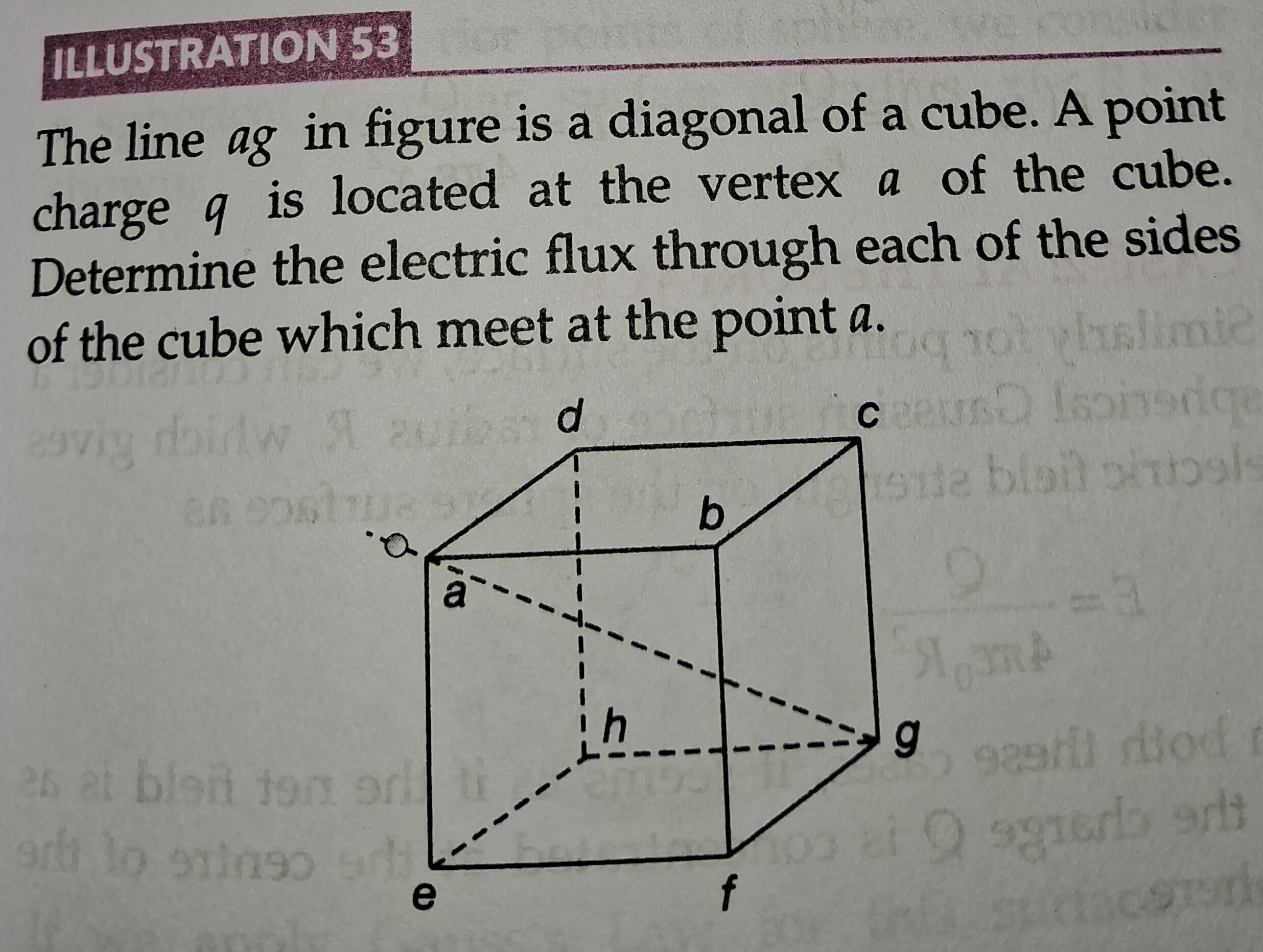Question
Question: The line $ag$ in figure is a diagonal of a cube. A point charge $q$ is located at the vertex $a$ of ...
The line ag in figure is a diagonal of a cube. A point charge q is located at the vertex a of the cube. Determine the electric flux through each of the sides of the cube which meet at the point a.
ILLUSTRATION 53

8ϵ0q
6ϵ0q
24ϵ0q
4πϵ0q
24ϵ0q
Solution
The problem asks for the electric flux through each of the three faces of a cube that meet at a vertex where a point charge q is located.
We can solve this problem using the concept of solid angles. The electric flux Φ through a surface is given by the formula: Φ=4πϵ0qΩ where Ω is the solid angle subtended by the surface at the location of the charge q.
Let the charge q be placed at vertex a of the cube. There are three faces of the cube that meet at vertex a. Let these faces be F1,F2, and F3. These three faces are mutually perpendicular, forming a corner of the cube.
The solid angle subtended by the entire cube at vertex a is 81 of the total solid angle of a sphere (4π steradians). Therefore, the solid angle of the cube at vertex a is: Ωcube=84π=2π steradians
This solid angle Ωcube is formed by the three faces F1,F2, and F3 meeting at vertex a. By symmetry, the solid angle subtended by each of these three faces at vertex a is equal. Thus, the solid angle subtended by each face is: Ωface=3Ωcube=3π/2=6π steradians
Now, we can calculate the electric flux through each of these three faces using the flux formula: Φface=4πϵ0qΩface=4πϵ0q(6π)=24ϵ0q
Therefore, the electric flux through each of the sides of the cube which meet at the point a is 24ϵ0q.
